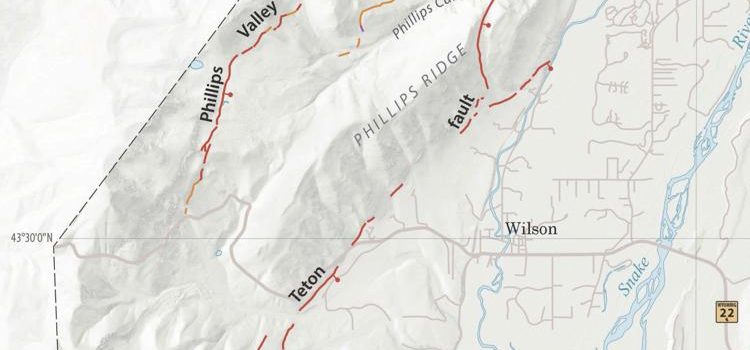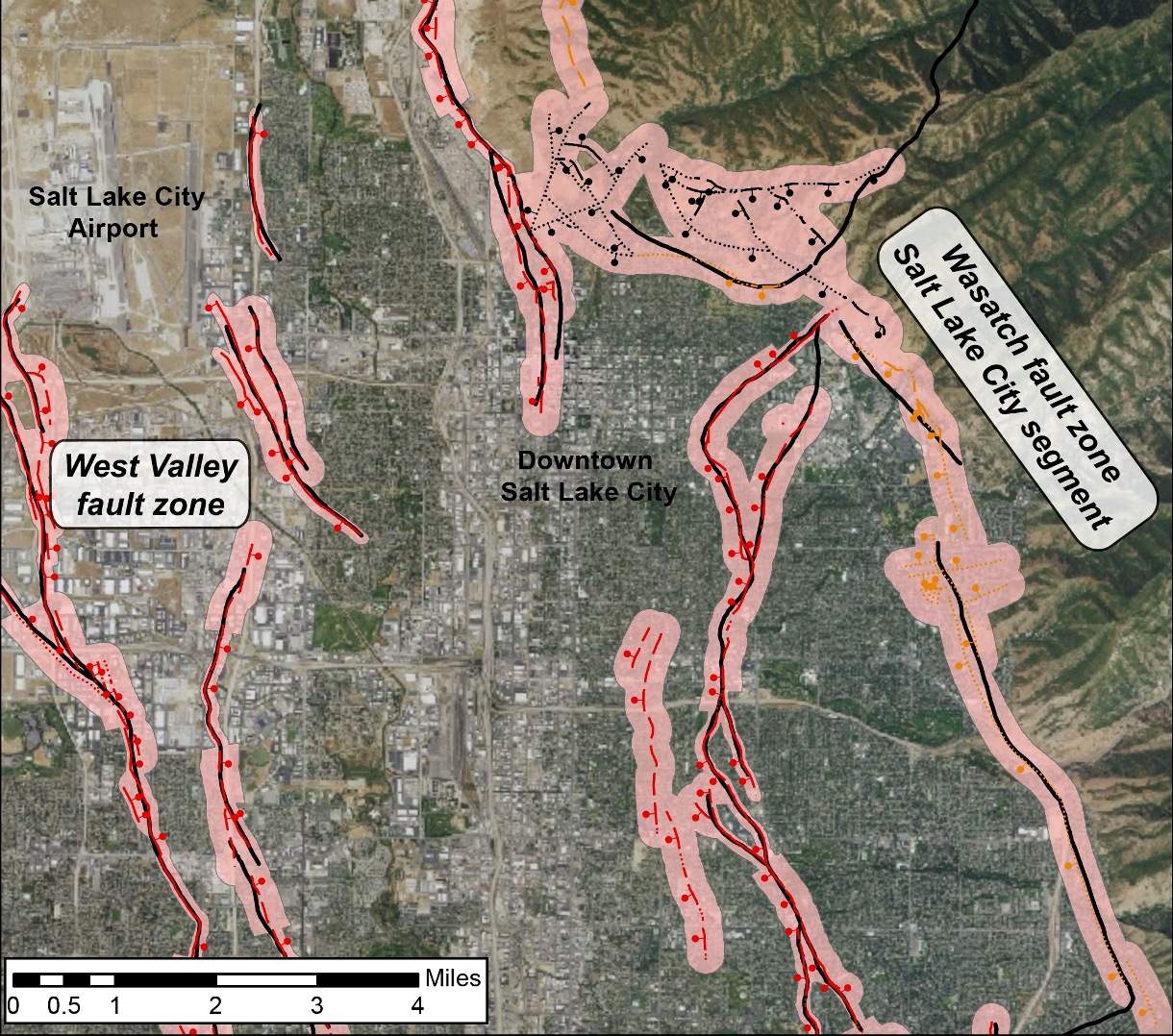Geological Significance of Wyoming’s Fault Lines

Wyoming’s landscape is shaped by a complex network of fault lines, which are the result of the state’s unique geological history. These faults have played a significant role in forming the state’s mountains, valleys, and other geological features.
The most prominent fault lines in Wyoming are the Wind River Thrust Fault, the Gros Ventre Thrust Fault, and the Heart Mountain Thrust Fault. These faults are all part of the Rocky Mountain Foreland Fold and Thrust Belt, which is a region of deformed rock that extends from the Rocky Mountains to the Great Plains.
The Wind River Thrust Fault is the longest fault in Wyoming, stretching for over 200 miles across the western part of the state. The Gros Ventre Thrust Fault is located in the northwestern part of the state, and the Heart Mountain Thrust Fault is located in the north-central part of the state.
These faults are all reverse faults, which means that the rock on one side of the fault has moved up relative to the rock on the other side. The movement of the rock along these faults has created a series of mountains and valleys in Wyoming.
The Wind River Thrust Fault has created the Wind River Range, which is the highest mountain range in Wyoming. The Gros Ventre Thrust Fault has created the Gros Ventre Range, and the Heart Mountain Thrust Fault has created the Heart Mountain Range.
These fault lines are also associated with a number of other geological features, including hot springs, geysers, and oil and gas fields. The hot springs and geysers are caused by the movement of water along the faults. The oil and gas fields are located in the rock formations that are associated with the faults.
The fault lines in Wyoming are a reminder of the state’s complex geological history. These faults have played a significant role in shaping the state’s landscape and continue to be an important part of its geology today.
Impact on Wyoming’s Landscape and Environment

Fault line in wyoming – Fault lines have played a significant role in shaping the topography and hydrology of Wyoming. These geological features have influenced the state’s unique geological formations, such as mountains, valleys, and rivers, while also posing potential environmental hazards, including earthquakes, landslides, and groundwater contamination.
Influence on Topography
- Mountain Ranges: Fault lines have uplifted and tilted blocks of the Earth’s crust, creating mountain ranges such as the Big Horn Mountains and the Laramie Range.
- Valleys: Fault lines have also created valleys by dropping blocks of the crust. The Wind River Basin and the Powder River Basin are examples of such valleys.
- Plateaus: Fault lines can also create plateaus by uplifting large areas of land. The Great Plains, which cover much of eastern Wyoming, is an example of a plateau formed by fault lines.
Influence on Hydrology, Fault line in wyoming
- Rivers: Fault lines can influence the course of rivers by creating barriers or channels. The North Platte River, for example, follows a fault line for much of its course.
- Groundwater: Fault lines can also affect groundwater flow by creating barriers or channels. This can lead to the formation of aquifers or springs.
Environmental Hazards
- Earthquakes: Fault lines are associated with earthquakes. While Wyoming does not experience many large earthquakes, it is still at risk for smaller earthquakes that can cause damage to buildings and infrastructure.
- Landslides: Fault lines can also trigger landslides. These landslides can be caused by earthquakes or by the erosion of rock along the fault line.
- Groundwater Contamination: Fault lines can also provide a pathway for groundwater contamination. This can occur when pollutants from the surface seep into the groundwater along the fault line.
Historical and Cultural Significance: Fault Line In Wyoming
/GettyImages-518939744-5ad57b938023b90036bfed6e-5b86f4d646e0fb00252450f6.jpg)
Wyoming’s fault lines have played a pivotal role in shaping the state’s human history and cultural heritage. From the earliest Native American settlements to the arrival of European explorers and the development of modern infrastructure, fault lines have left an enduring mark on Wyoming’s landscape and society.
Impact on Native American Tribes
Native American tribes have inhabited Wyoming for thousands of years, and fault lines have played a significant role in their cultural practices and beliefs. Many tribes consider fault lines to be sacred places, imbued with spiritual significance. The Shoshone, for example, believe that the Teton Fault is the path of the Great Spirit, while the Crow believe that the Bighorn Fault is a boundary between the spirit world and the physical world.
Influence on Settlement and Development
Fault lines have also influenced the settlement and development of Wyoming. In the 19th century, European explorers and settlers followed fault lines as they traversed the state, as these lines often provided easy passage through rugged terrain. The Union Pacific Railroad, built in the 1860s, was largely constructed along fault lines, as these areas offered stable ground for track construction.
Economic and Cultural Significance
Today, fault lines continue to shape Wyoming’s economy and cultural heritage. The state’s abundant mineral resources, such as coal and uranium, are often found along fault lines. The presence of these resources has led to the development of mining industries, which have played a significant role in Wyoming’s economic history.
In addition to their economic importance, fault lines have also influenced Wyoming’s cultural landscape. The state’s many hot springs and geysers are located along fault lines, and these natural wonders have become popular tourist destinations. The Grand Teton National Park, renowned for its stunning mountain scenery, is located in an area with numerous fault lines, which have contributed to the park’s unique geological formations.
The fault line in Wyoming whispers tales of ancient upheavals, its silent fissures hinting at forces beyond our grasp. Yet, as the sun dips below the horizon, casting long shadows across the rugged landscape, a distant echo of a different kind of battle reverberates in the air.
The crack of a baseball bat against a speeding ball, the roar of the crowd at a mets vs nationals prediction – a fleeting moment of exhilaration that echoes through the vastness of the fault line, reminding us of the indomitable spirit that resides within us, even amidst the most ancient of landscapes.
The fault line in Wyoming, a reminder of the Earth’s dynamic nature, evokes a sense of awe. Yet, far across the globe, another battle is being fought, a clash of titans in the realm of football. The rivalry between Uruguay and Bolivia heats up , as each team vies for supremacy.
And as the dust settles on the football field, the fault line in Wyoming stands as a testament to the relentless forces that shape our world.